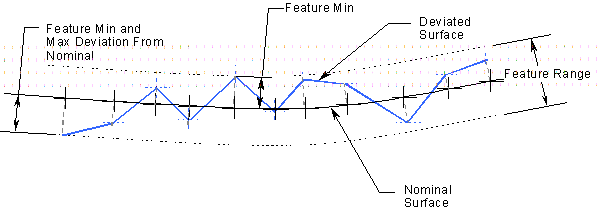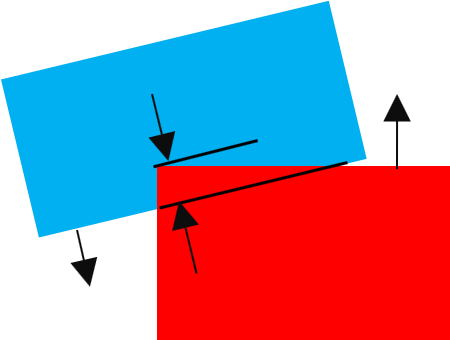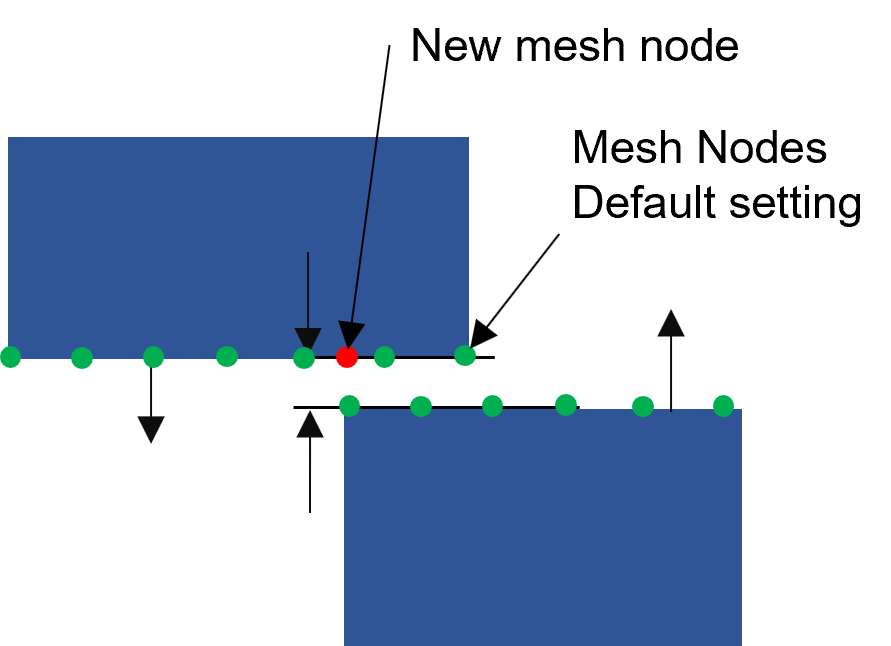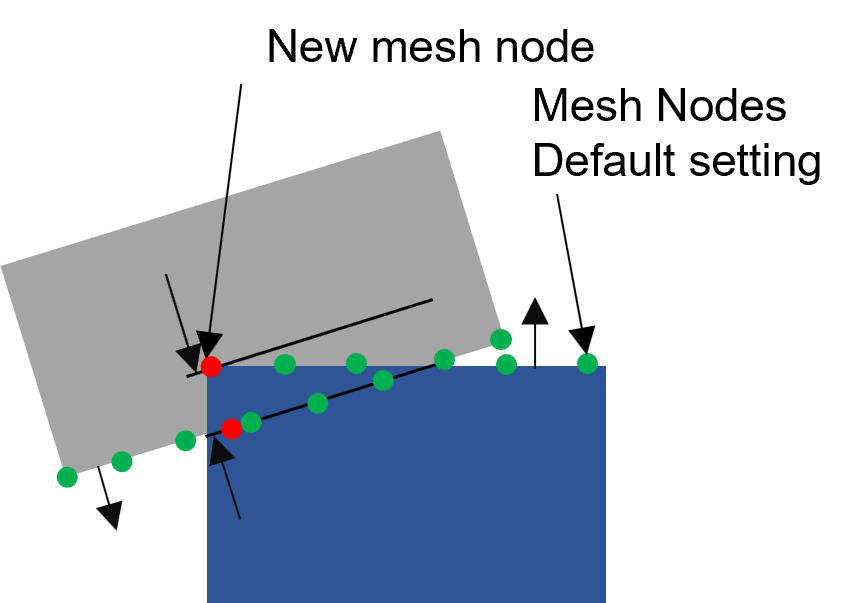The |
Input:
Geometry requirements: A feature or a list of features
Specification Limits: Can be applied or set to N/A
Description: Optional
输入:
几何要求:一个特征或特征列表
规格限制:可应用或设置为不适用
描述:可选
Output:
Feature-Feature: The minimum distance or interference between a list of features.
特征-特征:特征列表之间的最小距离或干涉。
Feature-Nominal: The minimum deviation along a vector of the specified feature from the nominal position.
特征-标称:指定特征沿矢量方向相对于标称位置的最小偏差。
Feature-Feature: This mode measures between each face in the From Feature and the To Feature lists. The measure will find and report the minimum value or the interference value.
特性-特性:此模式测量“从特性”列表与“到特性”列表中每个面之间的间距。该测量将查找并报告最小值或干涉值。
| Contact Feature Condition接触特征条件 | |
|
Fig.1 |
Fig.2 |
Contact Condition: The minimum distance reported can show 0, when the features are contact nominally and no deviation is applied.
接触条件:当特征名义上接触且未应用偏差时,报告的最小距离可以显示 0。
| Offset Feature Condition偏移特征条件 | |
|
Fig.3 |
Fig.4 |
Offset Condition: The minimum distance of an offset condition uses the direction of the surface to define the minimum distance between the parts.
偏移条件:偏移条件的最小距离使用曲面的方向来定义零件之间的最小距离。
| Interference Feature Condition干涉特征条件 |
|
Fig.5 |
Interference Condition: The minimum distance between features can be found from the direction of the surface and the closest mesh node, reporting a negative value. Changing the Mesh Density Facet Options, in the DCS Converter tool can improve the results, though it may cause running a Simulation to take longer.
干涉条件:可以从表面和最近的网格节点的方向找到特征之间的最小距离,并报告负值。在 DCS 转换器工具中更改网格密度刻面选项可以改善结果,但可能会导致运行模拟花费更长的时间。
Feature-Self: This mode measures from each point on the nominal surface to the corresponding point on the deviated surface, by measuring are taken in the direction of the associated nominal surface normal vector at each point. 特征自检:此模式通过沿每个点对应的名义表面法向量方向测量,计算名义表面上各点到偏差表面上对应点的距离。

Enhanced Feature Measure
This Enhanced Feature Measure will calculate the Feature distance more accurately. The Enhanced Feature Measure requires a Mechanical License. To activate the Enhanced Feature Measures, the setting can be found in the Preferences, under Model Settings.
增强特征测量
此增强特征测量将更精确地计算特征距离。使用增强特征测量需要机械许可证。要激活增强特征测量功能,可在“偏好设置”的“模型设置”中找到相关选项。
|
Points are not supported with the Enhanced Feature Measure modes.增强功能测量模式不支持点类。 |
Enhanced Feature Measurement (Exact Mode): Uses a more precise way to calculate the minimum distance and Interference, by calculating the feature direction and generating more mesh nodes between the features. This option can slow down Nominal Build and the Simulation process for all Feature Measures.增强特征测量(精确模式):采用更精确的方式计算最小距离和干涉,通过计算特征方向并在特征之间生成更多网格节点来实现。此选项会减慢所有特征测量的名义构建和模拟过程。
Measure Types - Minimum Clearance:
Feature-Feature: This mode measures between each face in the From Feature and the To Feature lists. The measure will find and report the minimum value or the interference value.
测量类型 - 最小间隙:
特征间测量:此模式测量"起始特征"列表与"目标特征"列表中每个面之间的间隙。该测量将查找并报告最小值或干涉值。
| Contact Feature Condition接触特征条件 | |
|
Fig.6 |
Fig.7 |
Contact Condition: The minimum distance reported can show as 0, if no tolerance or any variation is applied.
| Enhanced Feature Measure增强特征测试 | |
|
Fig.8 |
Fig.9 |
Offset Condition: The minimum distance of an offset condition uses the direction of the surface to define the minimum distance between the features and parts. With the enhanced feature measure, the measure will find and generate the closest mesh nodes on the surface to find the best result.
偏移条件:最小距离偏移条件利用曲面方向来定义特征与零件之间的最小距离。通过增强的特征测量功能,系统将查找并生成曲面上最接近的网格节点,以获得最佳结果。
Interference Condition: The minimum distance between the features can be found from the direction of the surface and the closest mesh node. Changing the Mesh Density Facet Options, in the DCS Converter tool can improve the results, though it may cause running a Simulation to take longer to calculate the results.
干涉条件:可以通过表面方向和最近的网格节点确定特征之间的最小距离。在DCS转换器工具中调整网格密度面选项可以改善结果,但可能导致仿真计算时间延长。

Frequently Asked Questions
Notes:•For best results, users can apply •Using Points in the Feature Distance Measure: Every point selected will be treated as a separate feature. A point selected in a Feature-Feature type measure will be treated as a directionless feature. A measure between two points will have the same result as a true distance measure. A point selected in a Feature-Self type measure will be measured along its vector. 笔记: •在要素距离测量中使用点: 所选的每个点都将被视为一个单独的要素。 在要素-要素类型测量中选择的点将被视为无方向要素。 两点之间的测量值将具有与真实距离测量值相同的结果。 在特征-自类型测量中选择的点将沿其矢量进行测量。 |




























 1580
1580

 被折叠的 条评论
为什么被折叠?
被折叠的 条评论
为什么被折叠?








